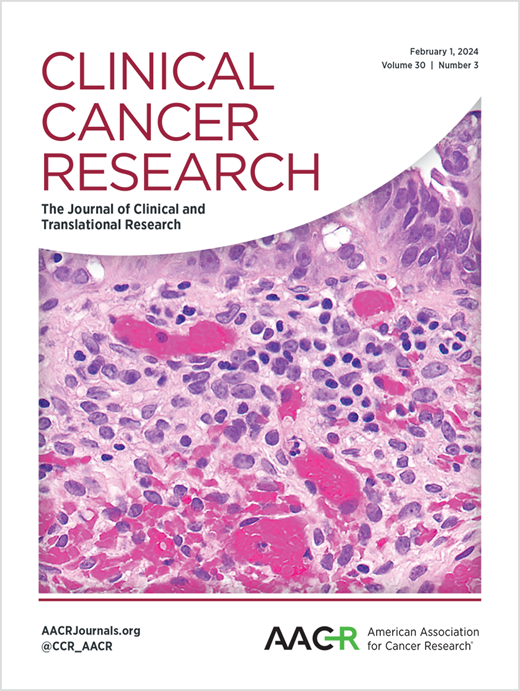FDA-AACR Strategies for Optimizing Dosages for Oncology Drug Products: Selecting Optimized Dosages for Registrational Trials
IF 10.2
1区 医学
Q1 ONCOLOGY
引用次数: 0
Abstract
The maximum tolerated dose has historically been the recommended phase two dose, and this dosage has typically been evaluated in registrational clinical trials for oncology drugs. With the emergence of targeted therapies, this approach may lead to the investigation of unnecessarily high dosages that elicit additional toxicity without added benefit. The utilization of innovative trial designs and model-informed approaches during clinical development can potentially lead to more informed dosage selection. Exposure-response analyses, clinical utility index, and other model-informed approaches have been successfully applied to understand preliminary activity and safety data for various classes of modern oncology drugs, providing insight to support the proposed dosage(s) for the registrational trial. Seamless trial designs have also played an important role in dosage selection by leveraging pre-planned flexibilities and statistical procedures to increase efficiency during the conduct of trials. Critically, both approaches can be fit for purpose, allowing for adaptation and the usage of the totality of relevant clinical and nonclinical data. Despite this, the evaluation of maximum tolerated dose remains prevalent in registrational trials. This article, the third in a series of three describing best-practice approaches to dosage optimization in oncology drug development, highlights successful applications of and relevant considerations for innovative trial designs and model-based approaches to aid the selection of better optimized dosages for evaluation in registrational clinical trials.FDA-AACR优化肿瘤药物剂量的策略:为注册试验选择最佳剂量
最大耐受剂量历来是推荐的第二阶段剂量,该剂量通常在肿瘤药物的注册临床试验中进行评估。随着靶向治疗的出现,这种方法可能导致不必要的高剂量的研究,这些剂量会引起额外的毒性而没有额外的益处。在临床开发过程中使用创新的试验设计和模型知情方法可能会导致更明智的剂量选择。暴露-反应分析、临床效用指数和其他基于模型的方法已经成功地应用于了解各种现代肿瘤药物的初步活性和安全性数据,为支持注册试验的建议剂量提供了见解。无缝试验设计也在剂量选择中发挥了重要作用,通过利用预先计划的灵活性和统计程序来提高试验进行期间的效率。关键的是,这两种方法都可以适合目的,允许调整和使用相关临床和非临床数据的总体。尽管如此,最大耐受剂量的评估仍然普遍存在于注册试验中。本文是三篇描述肿瘤药物开发中剂量优化最佳实践方法的系列文章中的第三篇,重点介绍了创新试验设计和基于模型的方法的成功应用和相关考虑,以帮助在注册临床试验中选择更好的优化剂量进行评估。
本文章由计算机程序翻译,如有差异,请以英文原文为准。
求助全文
约1分钟内获得全文
求助全文
来源期刊

Clinical Cancer Research
医学-肿瘤学
CiteScore
20.10
自引率
1.70%
发文量
1207
审稿时长
2.1 months
期刊介绍:
Clinical Cancer Research is a journal focusing on groundbreaking research in cancer, specifically in the areas where the laboratory and the clinic intersect. Our primary interest lies in clinical trials that investigate novel treatments, accompanied by research on pharmacology, molecular alterations, and biomarkers that can predict response or resistance to these treatments. Furthermore, we prioritize laboratory and animal studies that explore new drugs and targeted agents with the potential to advance to clinical trials. We also encourage research on targetable mechanisms of cancer development, progression, and metastasis.
 求助内容:
求助内容: 应助结果提醒方式:
应助结果提醒方式:


